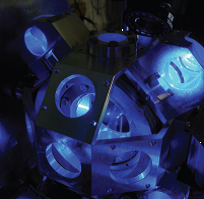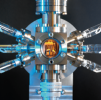REG Gravity potential for optical clock comparisons
REG contact person: Dr Heiner Denker, LUH
Overview

Frequency comparisons between optical clocks in different locations rely on a precise knowledge of the gravity potential at the respective clock positions in order to be able to correct for the gravitational redshift of the clock transition frequencies.
According to the laws of general relativity, one part in 1018 clock performance corresponds to about 0.1 m2s-2 in terms of the gravity potential, which is equivalent to 1 cm in height. This is significantly beyond the current state-of-the-art knowledge of the gravity potential. The determination of the gravity potential with the best possible accuracy is therefore essential if international timescales are to benefit from the superior performance of optical clocks compared to microwave clocks.
The REG provided geodetic knowledge, observations and results relevant to the local and remote clock comparisons carried out within the project (WP1, WP2, WP5), to the proof-of-principle clock-based geodesy experiment (WP4), and to the study of relativistic effects on a continuously operating transportable optical clock (WP3). In particular, information on the gravity potential and its time variations were provided with the best possible accuracy.
Read more information about gravity observations at and around the optical clock comparison sites, how these were used to derive improved gravity potential values at the clock locations, and what is the magnitude of time-variable components of the gravity potential.

The research within this EURAMET joint research project receives funding from the European Community's Seventh Framework Programme, ERA-NET Plus, under Grant Agreement No. 217257.

